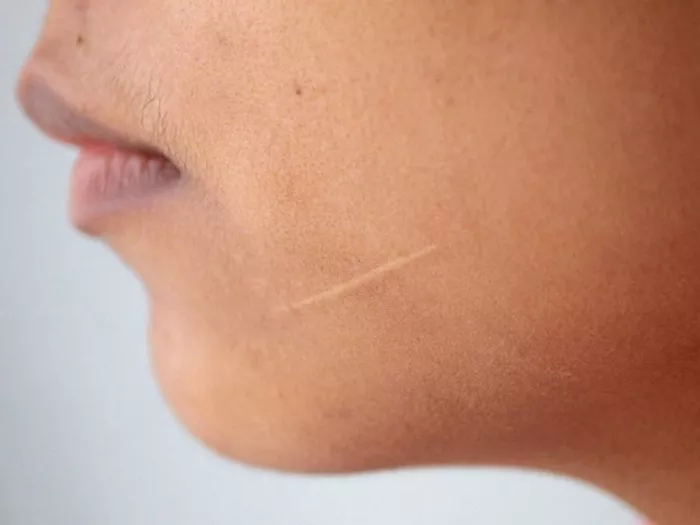Old scars, whether from surgeries, injuries, or other traumas, can often be a source of concern for individuals seeking to improve their skin’s appearance. In the quest for effective scar management, the market offers a plethora of scar creams, each claiming to be the best for old scars. In this comprehensive exploration, we delve into the world of scar creams, dissecting ingredients, examining scientific evidence, and offering insights to help individuals make informed decisions in their pursuit of the best scar cream for old scars.
Understanding Old Scars
Before delving into the world of scar creams, it’s essential to understand the nature of old scars. Scar tissue is the result of the body’s natural healing process, where collagen fibers align to repair damaged skin. Over time, scars undergo a maturation process, potentially becoming less noticeable. However, factors such as genetics, the type of injury, and individual healing characteristics contribute to the variability in how old scars appear. Scar creams targeting old scars aim to address the texture, color, and overall appearance of mature scar tissue.
The Best Scar Cream for Old Scars
Choosing the best scar cream for old scars involves considering several key factors. Ingredients play a crucial role, with certain compounds demonstrating efficacy in promoting scar improvement. Look for scar creams containing ingredients like silicone, vitamin E, onion extract, and hyaluronic acid. These components are believed to contribute to scar hydration, collagen remodeling, and overall scar softening. Additionally, consider the formulation – whether it’s a gel, ointment, or cream – as this can impact the ease of application and absorption.
Scientifically Backed Ingredients
Several ingredients found in scar creams have garnered scientific attention for their potential in scar improvement. Silicone, in various forms such as gels or sheets, has shown efficacy in reducing scar thickness and redness. Vitamin E, a well-known antioxidant, is believed to support collagen production and scar hydration. Onion extract, with its anti-inflammatory properties, may contribute to scar softening. Hyaluronic acid, renowned for its moisturizing effects, is another ingredient that features prominently in scar creams targeting old scars.
Examining Clinical Evidence
While individual responses to scar creams can vary, examining clinical evidence provides insights into the potential efficacy of certain ingredients. Research studies on silicone-based products, for instance, have demonstrated their positive impact on scar appearance. Similarly, studies investigating the effects of vitamin E on scars suggest its potential in improving scar texture and color. While clinical evidence is an essential consideration, it’s crucial to approach it with a discerning eye and consider the broader context of scar management.
Best Scar Creams for Old Scars
In the crowded landscape of scar creams, some products stand out as top contenders for addressing old scars. Mederma Advanced Scar Gel, with its proprietary blend of botanical extracts, is a widely recognized option. Bio-Oil, enriched with vitamins and plant extracts, is another popular choice known for its moisturizing properties. ScarAway Silicone Scar Sheets, leveraging the benefits of silicone, is favored for its ease of use. These products, among others, have gained popularity for their potential to contribute to scar improvement.
User Reviews and Testimonials
Beyond scientific studies, user reviews and testimonials provide valuable real-world insights into the effectiveness of scar creams. Individuals sharing their experiences with specific products offer perspectives on factors such as ease of application, noticeable improvements, and overall satisfaction. It’s important to note that individual responses can vary, and what works well for one person may not yield the same results for another. Consider user reviews as one aspect of the decision-making process, complementing other considerations such as ingredients and scientific evidence.
Combining Scar Creams with Other Approaches
While scar creams play a significant role in scar management, combining them with other approaches enhances the overall effectiveness. Sun protection is paramount, as UV exposure can worsen the appearance of scars. Massage techniques, when applied correctly, may contribute to scar softening. In some cases, individuals may explore non-invasive treatments such as laser therapy or microneedling, which can complement the effects of scar creams. A comprehensive strategy that addresses multiple aspects of scar care maximizes the potential for positive outcomes.
Consulting Healthcare Professionals
Individuals with old scars, especially those considering the use of scar creams, benefit from consulting healthcare professionals. Dermatologists, plastic surgeons, or specialists in scar management can provide tailored recommendations based on the specific characteristics of the scars and individual health considerations. Professional guidance ensures that the chosen scar management approach aligns with the unique needs of the individual, optimizing the potential for positive outcomes.
Potential Limitations and Considerations
While scar creams can contribute to scar improvement, setting realistic expectations is crucial. Old scars may not completely disappear, and the goal of scar management is often to minimize their visibility and improve overall skin texture. Additionally, individual responses vary, and factors such as scar type, age, and skin characteristics influence the outcomes. It’s advisable to approach scar management with a realistic perspective, understanding that improvement is possible but may vary from person to person.
The Importance of Patience
Patience is a virtue when it comes to scar management. Old scars, undergoing a maturation process, require time to potentially soften, fade, and become less noticeable. Consistent and diligent application of scar creams, coupled with other scar care strategies, contributes to the gradual improvement of scars. It’s essential to recognize that visible results may take weeks to months, and in some cases, continued use of scar creams may be beneficial for an extended period.
Conclusion
In conclusion, the quest for the best scar cream for old scars involves a nuanced exploration of ingredients, scientific evidence, user experiences, and professional guidance. Understanding the complexities of scar tissue, the role of key ingredients, and the factors influencing scar improvement empowers individuals to make informed choices in scar management. While no single product can guarantee complete elimination of old scars, the strategic use of scar creams, combined with other scar care approaches, contributes to the potential for visible improvement. Consulting with healthcare professionals ensures that the chosen approach aligns with individual needs, fostering confidence in the journey towards scar improvement and overall skin wellness.
[inline_related_posts title=”You Might Be Interested In” title_align=”left” style=”list” number=”6″ align=”none” ids=”3327,3325,3257″ by=”categories” orderby=”rand” order=”DESC” hide_thumb=”no” thumb_right=”no” views=”no” date=”yes” grid_columns=”2″ post_type=”” tax=””]
































